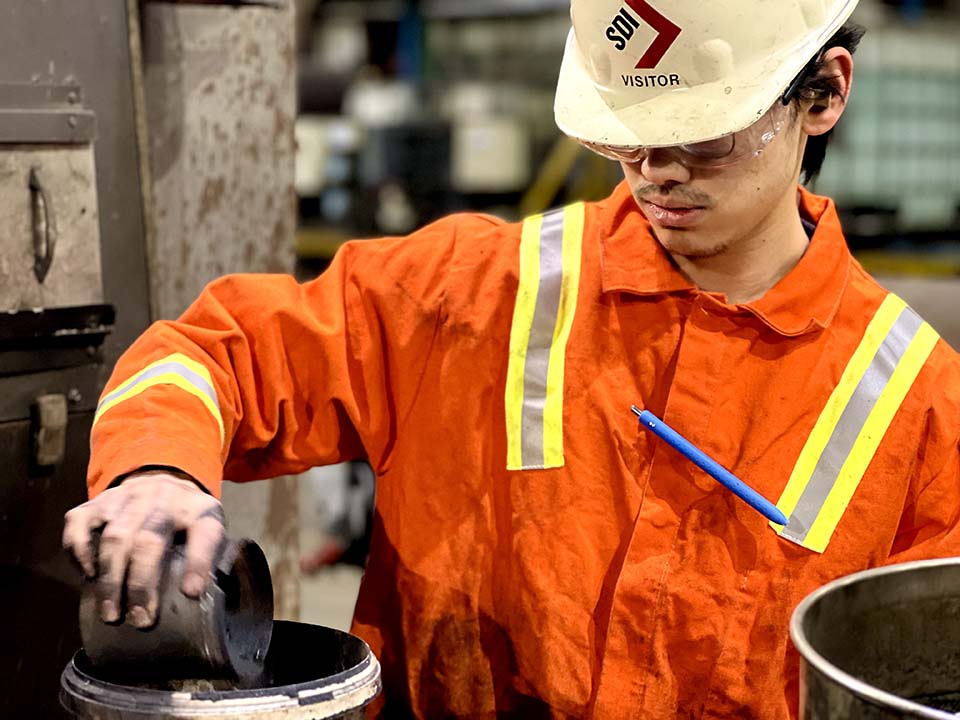Does adjusting speed and/or temperature result in better briquettes for iron production?
That’s the question a Trine University senior design team set out to answer.
Chemical engineering majors Takeshi Alvarez of Southlake, Texas, Eden Diller of Fort
Wayne, Indiana, and Caterina Staton of Mongo, Indiana, tested multiple run speeds
and operating temperatures in the process Iron Dynamics, a division of Steel Dynamics
Inc., uses to produce iron briquettes that are melted to make pure iron.
It was one of two projects Trine students conducted related to the process. Another group looked at the composition of the briquettes, to see if different ratios or varieties of materials would reduce waste.
Touring, then testing
Staton said she was drawn to the project by the opportunity to work for Steel Dynamics.
She was familiar with the company through family members who work there.
“I have experience solely in the food production industry, so this project exposed
me to a whole new industry,” she said. “I liked how abstract the process improvement
was. Iron Dynamics allowed us to explore what we believed could make process differences.”
The group began by touring the Steel Dynamics plant to observe the iron production
process. They then brainstormed and met with advisors at Iron Dynamics to determine
the relevant variables.
“After this we evaluated the possible variables for testing feasibility. The variables
were then narrowed down to run speed and temperature,” Staton said.
The group manipulated run speed by varying the amount of energy fed to the briquetter,
and temperature by putting the binder and dry mix in a freezer or hot water bath.
They measured the content, strength and microstructure uniformity of the resulting
briquettes.
They found that optimum briquettes were obtained by reducing the speed of the briquetter
rolls while maintaining the same temperature.
“By changing the speed, we were able to increase the average strength of the briquettes,
contributing to less fine material within the product and improving the performance
of other downstream processes,” said Diller. “We discovered that improving briquettes
would result in less recycled material, an increase of briquetter roll life and a
higher smelting capacity in downstream processes, which combined has the potential
of saving Steel Dynamics millions of dollars.”
New industries, skills
Staton said the concepts she has learned at Trine helped her understand and predict
the underlying dynamics of the process.
“It also allowed me to understand how to analyze the data to interpret the results,”
she said.
Staton, who plans to work in the foods industry, said the project exposed her to another
industry and helped her understand project-based work dynamics and how to effectively
work in a group.
Diller, who previously had interned with SDI, has accepted a job with the company
upon graduation as a cold mill process metallurgist.
“Overall, working with the Iron Dynamics Division has been a one-of-a-kind experience
provided by Trine University,” she said. “Not many college students can say they've
worked hand-in-hand with senior-level engineers, solving actual problems effecting
their production. I can safely say we all learned quite a bit about the practicality
of engineering.”





